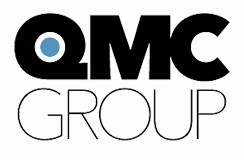You’ve heard people talk about the value of content marketing. It’s one of the most important ways that people find you. If you are delivering content via digital channels, prospects can immediately click through to learn more. If your content is being provided in print, this is often what drives them to check you out online in the first place.
Content marketing is not just for increasing visibility. It’s for establishing trust and credibility with your target audience, too. A company with relevant, informative content is quickly identified as a thought leader. If buyers trust your content, they will trust your products.
How do you get it right? Here are five best practices from the CMO Council, an online resource for chief marketing officers:
- Partner with credible + trusted sources. Unless you are an ad agency, writing direct mail, email, and other content likely isn’t your specialty. Stick to what you do best—your products and services—and work with specialists to create the content that will put you in the best light.
- Present authoritative, newsworthy, and enriched content. When it comes to creating thought leadership, “any old” content won’t do. It has to be accurate, relevant, and current.
- Produce compelling strategic insights. Don’t rehash information your audience can get elsewhere. Create fresh content that reflects your expertise.
- Add customer-contributed views + validation. Social proof is key to credibility. Add customer reviews, testimonials, and UGC (user generated-content) whenever possible.
- Engage qualified, verified, and predisposed audiences. The key to conversion is targeting the right content to the audience most likely to be in a buying mood. If you are selling home furnishings, for example, not everyone will need a new living room or dining set. Find the right targets—say, new movers or recently marrieds—and then put the right information in front of them. Your conversion rate will go way up.
Be sure to tailor your content to the right channel, as well. The type of content you use in a direct mail piece will be different from the content you use in an email. Know your channels and how best to use them.
Are you using content to draw potential buyers into your sales funnel and convert them to happy customers? If not, how can we help you get started?

